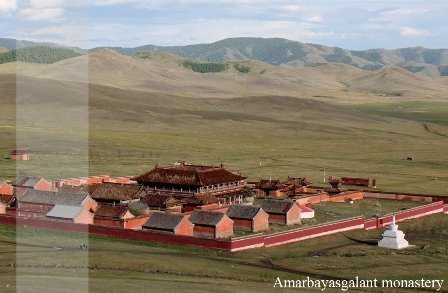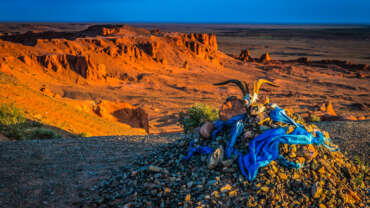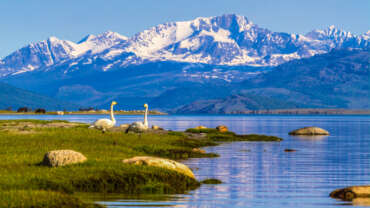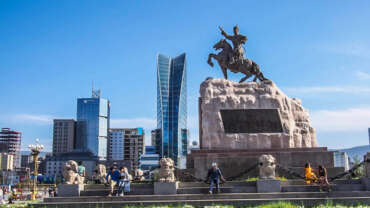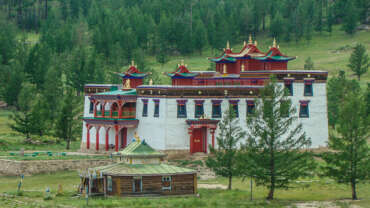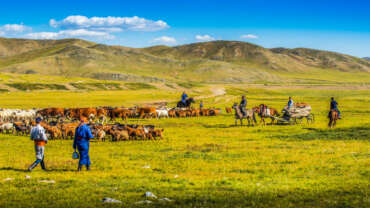Northern Mongolia
Visiting Tsaatan nomad family is a great opportinuty to explore their unique lifestyle. Northern part of Mongolia is known by Amarbasygalant monastery,Uran uul(extinct volcano).
Northern Mongolia is a main travel destination of Mongolia.
The highlight of Mongolia’s Northern provinces, an alpine region bordering the forests of Siberia, is pristine Khuvsgul Lake, known as Mongolia’s “dark blue pearl and Darkhad valley – there are over 200 lakes surrounded by high mountains covered with forest and extensive marshland, which is a home of reindeer people -Tsaatan ethnic minority.
Many ethnic groups of Mongolia live in this region. Especially you can see tsaatan (reindeer herders) people’s life. Also there are many unique cultural, historical and natural sights.
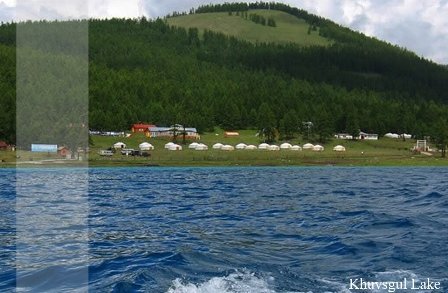
Khuvsgul Lake
Khuvsgul Lake National Park is one of the major tourist attractions in Mongolia. This lake is known as the second clearest water lake in the world after Baikal Lake in Russia. Water is crystal clear so that you can see the bottom of the lake when you are sailing. The lake is 136 kilometers long, 36 kilometers wide, 262 meters deep from its surface to the bottom and make up over 1% of the world’s fresh water.
Khuvsgul lake is surrounded by majestic mountains covered with thick pine and larch forests where the unique wildlife of the region flourishes.
There is an excellent opportunity to become acquainted with the lifestyle and traditions of reindeer breeders who live in the mountain forests close to the lake.”
Highlights: The Lake is ideal for kayaking, boating, fishing, horseback riding, trekking, birding, camping, wildlife viewing, and photography.
Uushig Deer Stone Monument
Uushig Deer Stone Monument – A deer-decorated stones in Uushigiin uver of Khuvsgul province considered as most clearly depicted deer stones in Mongolia. These deer stones were aligned from north to south in a single column. Each stone is 3-20m distant from each other and made of tetrahedral granite stone in reddish color. A deer, an arch, a shield, a horse, a knife, the moon, the sun and a mirror figured belt were engraved on the stones.
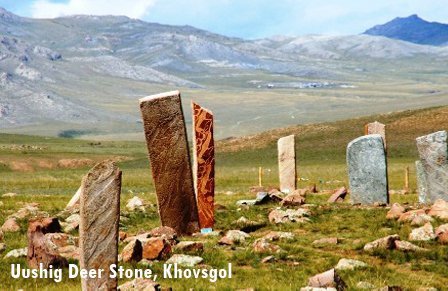
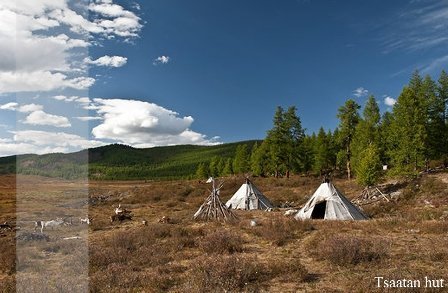
Darkhad Valley & Reindeer People
Darkhad Basin lies 50 km west of Lake Khuvsgul. There are over 200 lakes in the area, the largest of which is Lake Tsagaan. The lake is well-known for the famous white fish that live in it. The lake is surrounded by high mountains covered with forest and extensive marshland, which are an ideal environment for reindeer breeding.
Most of the Tsaatan minority, or the reindeer breeders, live in this region. This ethnic people’s lifestyle and traditions are of special interest not only to tourists, but also to researchers and scholars from all over the world as they are very isolated in their remote and difficult to reach homeland. Shamanism, the worship of nature, is the main religion of the reindeer breeders.
Shamanism
People in Khuvsgul most commonly practice shamanism and some of the most powerful shaman live in this area. The shamanism rituals is based on the view that besides the visible world the shaman interacts with many other worlds or universes, and that contacting the spirits is an important part of shamans’ work. Every day, month, and year shamans constantly do their work with poetic invocation, music, dance, and creative arts. Today northern Mongolian groups Darkhad, Tsaatan, Hotgoit, and Buryat ethnic group’s shamans still maintain the ancient shamanic traditions.

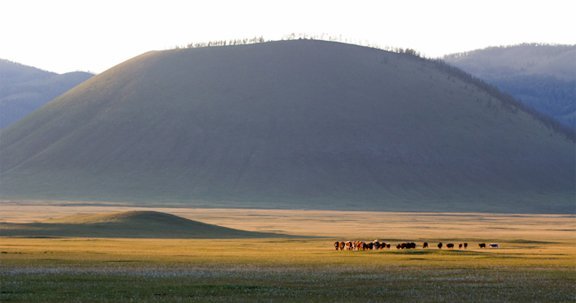
Uran Togoo National Park
National park’s main highlight is Uran Uul extinct volcano is located on the half way point between the two major travel destinations-the Khuvsgul Lake and Amarbayasgalanr Monastery. The crater of Uran Uul volcano is about 600 meters in diameter and 50 meters in depth and has small lake at the bottom of it.
Amarbayasgalant Monastery
The Monastery is one of the four leading important monasteries of Mongolia. The construction of the monastery temples, towers and other buildings, completed in 1737, represents the creative work and great craftsmanship of that period of time. The style of the monastery is predominantly Chinese, but with strong influences of Tibetan and Mongolian art. The monastery is one of only few monasteries that survived the religious purges of the 1930s thanks to its remote location, nevertheless 10 of the 37 temples were completely destroyed. The restoration of the monastery has recently almost been completed with the aid and assistance of UNESCO.”
